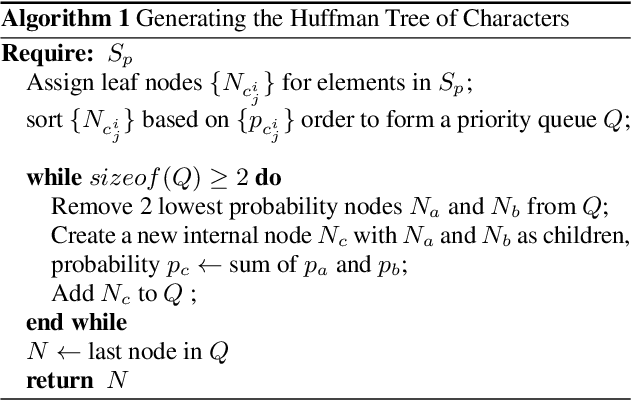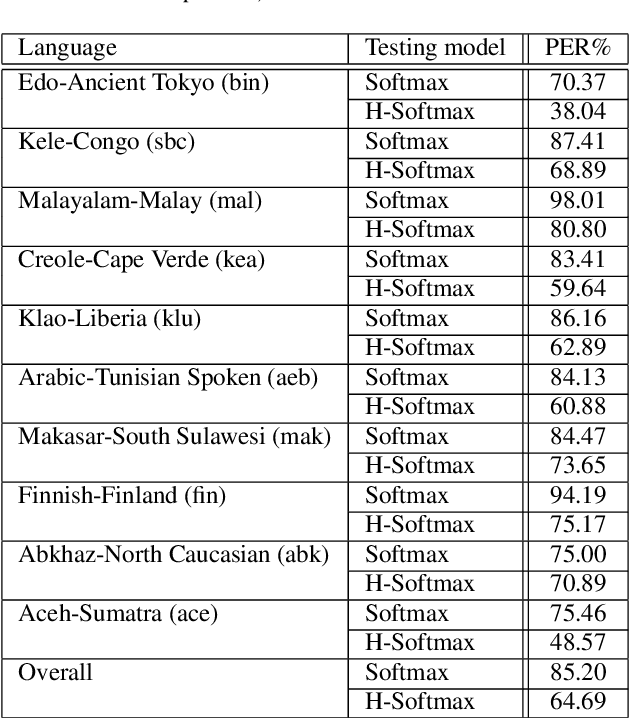Zhuo Gong
Hierarchical Softmax for End-to-End Low-resource Multilingual Speech Recognition
Apr 08, 2022



Abstract:Low resource speech recognition has been long-suffering from insufficient training data. While neighbour languages are often used as assistant training data, it would be difficult for the model to induct similar units (character, subword, etc.) across the languages. In this paper, we assume similar units in neighbour language share similar term frequency and form a Huffman tree to perform multi-lingual hierarchical Softmax decoding. During decoding, the hierarchical structure can benefit the training of low-resource languages. Experimental results show the effectiveness of our method.
Hybrid Attentional Memory Network for Computational drug repositioning
Jun 12, 2020



Abstract:Drug repositioning is designed to discover new uses of known drugs, which is an important and efficient method of drug discovery. Researchers only use one certain type of Collaborative Filtering (CF) models for drug repositioning currently, like the neighborhood based approaches which are good at mining the local information contained in few strong drug-disease associations, or the latent factor based models which are effectively capture the global information shared by a majority of drug-disease associations. Few researchers have combined these two types of CF models to derive a hybrid model with the advantages of both of them. Besides, the cold start problem has always been a major challenge in the field of computational drug repositioning, which restricts the inference ability of relevant models. Inspired by the memory network, we propose the Hybrid Attentional Memory Network (HAMN) model, a deep architecture combines two classes of CF model in a nonlinear manner. Firstly, the memory unit and the attention mechanism are combined to generate the neighborhood contribution representation to capture the local structure of few strong drug-disease associations. Then a variant version of the autoencoder is used to extract the latent factor of drugs and diseases to capture the overall information shared by a majority of drug-disease associations. In that process, ancillary information of drugs and diseases can help to alleviate the cold start problem. Finally, in the prediction stage, the neighborhood contribution representation is combined with the drug latent factor and disease latent factor to produce the predicted value. Comprehensive experimental results on two real data sets show that our proposed HAMN model is superior to other comparison models according to the AUC, AUPR and HR indicators.
 Add to Chrome
Add to Chrome Add to Firefox
Add to Firefox Add to Edge
Add to Edge